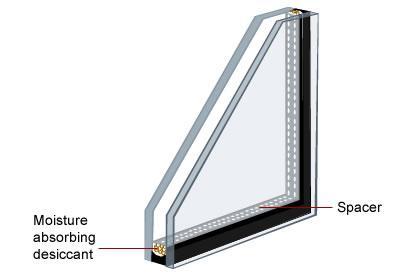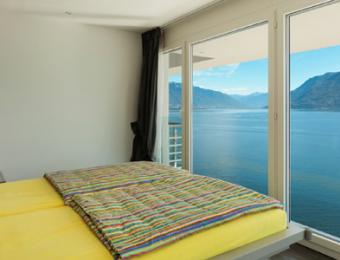
Heat transfer through windows
On average, windows account for about 11%-20% of heat lost in a home in cool climates. Unfortunately, they can also account for up to 25%-35% of heat gained in warmer weather, which makes them a very important consideration when you're thinking about insulation and your home's thermal envelope. Because basic window glass is a very good conductor, heat can pass through quite easily - especially the radiant heat that sunlight provides.
Under the current building regulations, houses need to be built so that window areas are equivalent to at least 10% of the floor area - although certain provisions exist for skylights and other roof lights too. The purpose of this rule is to help improve indoor air quality and prevent 'sick building syndrome' - and also to ensure adequate daylight.
From a practical perspective it means that now, more than ever, it's important to consider how much heat is allowed to pass through your windows - and what sorts of window insulation options you have to control this.
Double glazing and low-e glass
There are a number of different ways to reduce the amount of heat that's allowed in and out through your windows. Double or triple glazing, especially with argon gas between the layers instead of air, will provide very effective thermal resistance, as well as blocking a great deal of sound. The spaces between the panels act as the insulating layer and provide a barrier to both sound and heat.
Low emissivity (low-e) glass, which is manufactured with a coating that minimises the amount of heat passing through the glass while still allowing light through, also helps to significantly reduce heat transfer. Combining double glazing and low-e glass will provide almost the same amount of thermal resistance as a solid wall.
Curtains and shading
Strategic shading over windows goes a long way towards controlling heat gain through windows. Eaves can be designed so that they allow sunlight in during the cooler months when the sun's lower in the sky, and keep it out during hotter months when the sun's arc is higher. The size and position of your eaves will depend on how far south you live.
Curtains can also be used to block a lot of sunlight, and can be a cheap and effective way to regulate the temperature in your living environment. While they're not as effective as other methods of glass insulation and shading and do little to stop heat conducted through windows, thermal-backed curtains can at least stop most of the radiant heat gain through windows.
Window frames
Because window frames sit directly in a wall’s structure, they can very easily act as thermal bridges, allowing heat to leech in and out of your home’s thermal envelope. This is especially true of metal frames, such as those made of aluminium. Frames made from materials with a lower conductivity like wood, uPVC or even a composite design that incorporates thermal breaks greatly reduce the amount of heat that's allowed to pass through the frames.
Window frames should also have proper sealing to prevent draughts. This can be a problem for windows that are designed to open and close, particularly if they're exposed to high winds. Soft felt or rubber strips are normally used to stop the wind from getting through and to still allow the window to function normally.





